Rare Solar Eclipse – Watch The Sun Almost Disappear From Singapore On March 9th!

Thanks to the selfless and dedicated work of scientists, we know that Mother Nature will threaten to throw all our body clocks into disarray on the 9th of March where Singapore will experience a partial solar eclipse.
For those who don’t know, solar eclipses are rare events that only last for a few minutes where the moon aligns perfectly in a path between the sun and the Earth, casting a shadow on the latter and creating a “ring of fire” effect since the moon is smaller than the sun.
Credit: Reddit
To put into perspective how astronomically unlikely this is for Singaporeans to witness, only a very small portion of the Earth will be eclipsed in darkness since the moon is 400 times smaller than the sun. And that little portion, by sheer chance, happens to fall on the little red dot that we call home.
What we will witness in four weeks on the 9th of March, is only a partial eclipse (90% complete) but still a rare phenomenon by any means. According to Science Centre Singapore, the partial eclipse next month can be seen at around 7.22am to 9.33am, with the highest point of the eclipse somewhere around 8.23am.
https://www.youtube.com/watch?v=kgbK2FZFFdw
In other words, if you take the underground train lines to work, it may be worthwhile to switch to a bus route on this very special day in order to have a gander at this rare spectacle since the sky would see a low level of brightness akin to evening light unlike its usual 9am scorch that has some of us walking into office with wet shirts.
The paradox of this once-in-a-lifetime opportunity however, is that it is potentially harmful to our vision if we stare at the sun directly.
The following are unsafe methods to view the eclipse:
- Sunglasses (polarised and non-polarised versions)
- Solar film for car and household windows
- Tinted glass
- Photographic negatives
- X-ray film
- CDs/DVDs
- Photographic filters
- Looking at the reflection in a bowl of water or mirror
You can go
Golden Village Now Equipped With New 3D Sound Tech Which Makes Scary Movies Sound More Surreal!

Earlier last week, I had the chance to attend a media invite* from Golden Village Suntec City to mark the arrival of the revolutionary 3D immersive sound technology, Auro 11.1 by Barco on our shores.
[caption id="attachment_1684" align="aligncenter" width="701"]The Auro 11.1 is touted as the most realistic 3D sound experience currently available in the market, so I was pretty excited to have a first-hand experience with it.
The experience was delivered via a sneak preview of Jack Neo’s latest Chinese New Year film, “Long, Long Time Ago”, which was mixed in the new immersive technology at Galaxy Studios Belgium.
[caption id="attachment_1687" align="aligncenter" width="700"]So how did the sound system fare?
It was impeccable. It made me feel like I was brought back into 1960s Singapore, which was the time period that the film was set in. Now, you may be feeling skeptical about it but let me explain how it works.
So what’s the difference between Auro 11.1 and the usual 5.1 surround sound system?
Here’s a 6 minute trailer that’s similar to the one we watched on-site about how the sound system works. Of course you wouldn’t be able to get a true feel of it watching it off YouTube, but you’ll get a rough idea.
[embed]https://www.youtube.com/watch?v=WhzAk-XzmYQ[/embed]Basically, the usual 5.1 surround sound makes use of the layout of a horizontal plane and provides sound coming from the front and the back. However, the design is still inadequate because it cannot replicate the depth of the sound accurately. This makes it unable to fully provide an immersive experience.
On the other hand, the Auro 11.1 is designed to eliminate this flaw by employing a speaker layout that consists of three layers, which includes the coverage of the three axes, width, depth and height to create a 3-Dimensional feel. This creates a much more realistic experience for moviegoers as it mimics the real-life experience that we have while living within our 3-Dimensional world.
[caption id="attachment_1685" align="aligncenter" width="700"]In layman’s terms, if you were to listen to a plane flying overhead on 5.1 surround sound (width+depth), you probably wouldn’t be able to make out how high the plane is flying. It wouldn’t even sound like it was flying overhead! But with Auro 11.1(width+depth+height), you can. That is the amazing part of this system.
[caption id="attachment_1683" align="aligncenter" width="700"]With the introduction of this system on our shores, you can finally fully immerse yourself in the world of your favourite movies, as if you were standing there right beside your favourite characters. So far over 125 films have made use of this new technology, and that includes mega blockbusters such as “The Amazing Spider-Man 2” as well as the upcoming “Kung Fu Panda 3” which will be coming very soon to our shores on the 10th of March!
Time to hit the theatres for scary movies, don’t you think? Save me a seat!
*Alex is a brand ambassador for Discover SG. Brand ambassadors get to attend media invites, food tasting sessions and hotel staycations on behalf of Discover SG. Be a brand ambassador like Alex – get in touch with us today at [email protected]
你了解Zika病毒是什么吗? 会有什么症状?该如何防范?
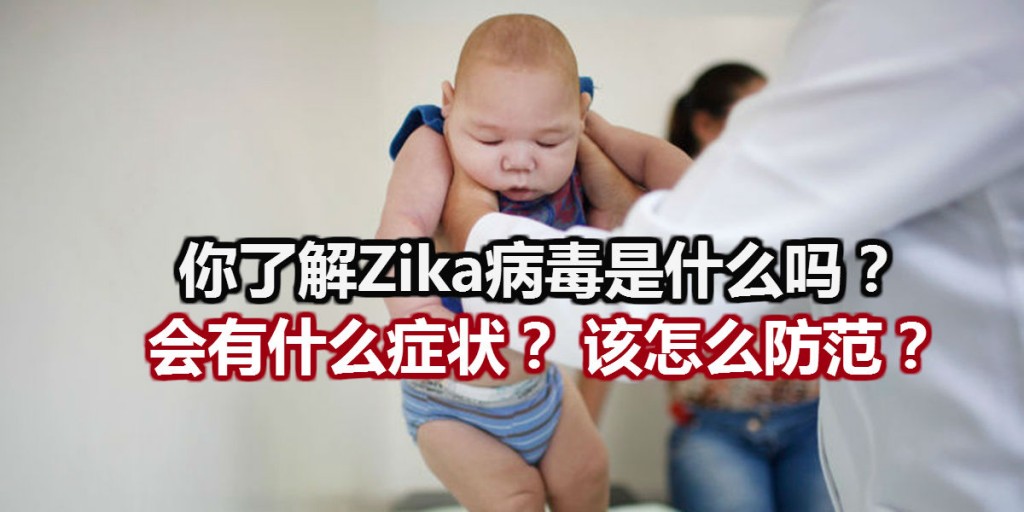
什么是Zika病毒?
Zika病毒最早于1947年在乌干达猴子身上发现,而在1954年,第一起人类病例就发生在奈及利亚,非洲、太平洋及东南亚也有发现疑似病情,但当时疫情规模不大。
2015年5月,巴西开始出现Zika疫情,蔓延速度非常快,在短短半年时间内,已传染至超过20个国家。美国国家卫生机构表示,Zika病毒正在 「爆发性传染」。
Zika病毒最大的问题在于,患者子宫内正在发育的胎儿会直接受到影响,造成小头畸形(Microcephaly)。
什么是Microcephaly?
- 胎儿头部的大小小于平均
- 大脑没有依正常速度发展
- 出生时,头围不到31.5cm-32cm
小头畸形又称小头症,是一种神经发育障碍。一般而言,有小头症的人,预期寿命会较短,而大脑功能方面也不完善。
会出现什么症状?
很少有人因Zika病毒而身亡,大概只有1/5的患者会出现以下症状:
- 轻微发烧
- 结膜炎(眼睛红肿酸痛)
- 头痛
- 关节疼痛
- 皮肤起疹子
罕见的神经系统失调症「格林巴利症候群」(Guillain-Barre)也可能导致暂时性麻痹。
该如何防范?

由于目前没有疫苗可医治,唯一的办法就是减低患上Zika病毒的可能性:
- 尽量穿着长袖衣物
- 定期清理及倒掉盆栽的水
- 抱持家园清洁
- 适当使用防蚊药
xx
xx
xx
大马卫生部:避免前往这26个国家Zika病毒已在多个国家迅速蔓延,特别是美洲。马来西亚卫生部长表示,世界卫生组织已在2月1日将Zika病毒列为全球紧急公共卫生事件,他劝请民众,尤其是是孕妇,在这期间内避免前往以下26个国家:
- 巴巴多斯
- 玻利维亚
- 巴西哥
- 伦比亚
- 哥斯达黎加
- 多米尼加共和国
- 库拉索
- 厄瓜多尔
- 萨尔瓦多
- 法属圭亚那
- 圭亚那共和国
- 瓜德罗普
- 危地马拉
- 洪都拉斯
- 海地
- 墨西哥
- 牙买加
- 委内瑞亚
- 巴拉圭
- 马提尼克
- 尼加拉瓜
- 巴拿马
- 波多黎各
- 美洲维京岛
- 圣马丁岛
- 苏利南
常见问题:
1. 如果你已怀孕了,并打算前往以上国家…..
请延后你的行程,否则你可能诞下患有小头畸形的胎儿。
2. 如果你正在尝试怀孕……
如果没有打算前往上述国家,并无需大碍,不过还是得随时跟进有关Zika病毒的消息,提高警觉。
3. 如果你是男性,回国后妻子正试着怀孕……
如果男人去疫区旅行、被带有Zika病毒的蚊子叮咬,有可能会在后来行房时传播病毒,有2篇相关研究暗示可能有这种风险。有1名男子前往塞內加尔后感染Zika病毒,返国后在行房时将病毒传染給妻子。
研究人员目前还不确定Zika会留在精子里多久,也不清楚透过性行为传染的几率有多大,目前证据十分有限。英格兰卫生当局建议前往疫区的男性,返国后至少1个月都要戴保险套进行性行为,如果是有不明原因发烧或确诊罹患Zika病毒,必须戴保险套6个月,美国当局则认为证据不足,没有发布相关建议。
Here’s A Look At All The Schools Our Singapore Ministers Attended When They Were Younger!
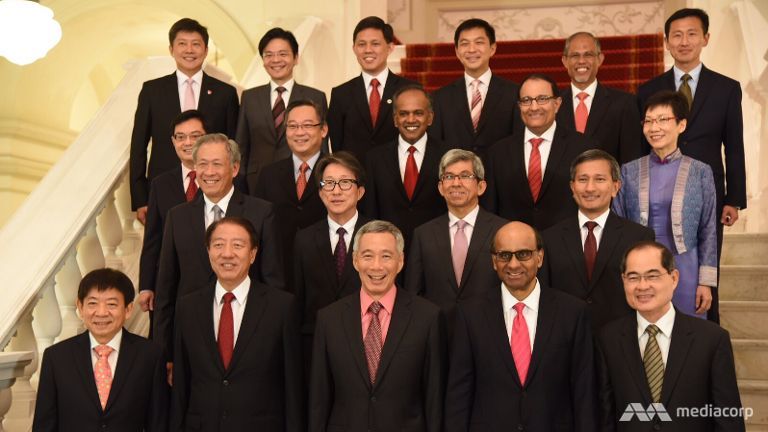
Well…. A lot of Singaporeans often complained about the supposedly “elitist” background of our cabinet. Considering our dear PM once made a remark on ” Mee Siam mai hum ( no cockles in my Mee Siam please ) “. It is incidents such as these that often make Singaporeans question how different is our cabinet ministers upbringing from other Singaporeans. Find out below:
1. Prime Minister – Lee Hsien Loong
PM Lee studied at Nanyang Primary School and received his secondary education at Catholic High School, before going on to National Junior College (where he learned the clarinet under the tutelage of Adjunct Associate Professor Ho Hwee Long).
In 1971, he was awarded a President’s Scholarship and Singapore Armed Forces Overseas Scholarship by the Public Service Commission to study mathematics at Trinity College, University of Cambridge. He was a senior wrangler (highest scorer among other students in Cambridge) in 1973 and graduated in 1974 with first class honours in mathematics and diploma in computer science (with distinction). In 1980, he completed a Master of Public Administration at the John F. Kennedy School of Government, Harvard University.
2. Deputy Prime Minister and Coordinating Minister for National Security – Teo Chee Hean
DPM Teo was educated at Saint Michael’s School and Saint Joseph’s Institution, before being awarded a President’s Scholarship and Singapore Armed Forces (SAF) Scholarship in 1973 to study in the United Kingdom at the University of Manchester Institute of Science and Technology. He graduated with a Bachelor of Science (First Class Honours) degree in electrical engineering and management science in 1976.
He then continued his studies at Imperial College London, obtaining a Master of Science degree (with distinction) in Computer science in 1977. In 1986, Teo completed a Master of Public Administration degree at the Kennedy School of Government at Harvard University.
3. Deputy Prime Minister and Coordinating Minister for Economic and Social Policies – Tharman Shanmugaratnam

DPM Tharman studied at Anglo-Chinese School, before going on to the London School of Economics, where he earned a bachelor’s degree in economics. He subsequently obtained a master’s degree in economics from the University of Cambridge and a Master in Public Administration from Harvard University, where he also received a Lucius N. Littauer Fellow award for outstanding performance.
4. Minister for Transport and Co-ordinating Minister for Infrastructure – Khaw Boon Wan
Minister Khaw received his secondary education in Chung Ling High School and Anglo Chinese School in Penang, Malaysia. In 1973, he was awarded the Colombo Plan Scholarship from Singapore to study a combined degree program in Engineering and Commerce at the University of Newcastle in Australia. He graduated in 1977 with a Bachelor of Engineering (Honours Class I) and Bachelor of Commerce.
He received his Master of Science degree in Industrial Engineering in 1982 from the National University of Singapore and received his Doctor of Engineering honoris causa from the University of Newcastle in 2002.
5. Minister in the Prime Minister’s Office – Chan Chun Sing
Minister Chan was educated at Raffles Institution (1982–85) and Raffles Junior College (1986–87). He was one of the top four scorers from Raffles Junior College, with six distinctions, including a distinction for Mathematics S-Paper and a merit for the Economics S-Paper.
In 1988, he was awarded a President’s Scholarship and Singapore Armed Forces Overseas Scholarship to study in the University of Cambridge, where he completed a degree in economics at Christ’s College and graduated with First Class Honours. In 2005, he completed the Sloan Fellows programme at the MIT Sloan School of Management under a Lee Kuan Yew Scholarship.
6. Minister for Communications and Information – Yaacob Ibrahim
Minister Yaacob studied at Tanjong Katong Technical Secondary School, which turned coeducational during his time there. He graduated from the University of Singapore with an honours degree in civil engineering in 1980 and in 1989 obtained a Doctor of Philosophy from Stanford University. He was a postdoc at Cornell University. He returned to Singapore in 1990 and joined the National University of Singapore faculty in 1991.
7. Minister for Trade and Industry (Trade) – Lim Hng Kiang
Minister Lim was educated in Raffles Institution, before being awarded a President’s Scholarship and Singapore Armed Forces Scholarship to study at the University of Cambridge, where he completed a degree in engineering in 1976. In 1985, Lim was awarded a scholarship to study for a Master of Public Administration degree at the John F. Kennedy School of Government at Harvard University.
8. Minister for Manpower – Lim Swee Say
Minister Lim was educated in Catholic High School and National Junior College, before being awarded a Singapore Armed Forces (SAF) Scholarship in 1973 to study in the United Kingdom at Loughborough University. In 1976, he graduated with first class honours in electronics, computer and systems engineering. In 1991, Lim completed a master’s degree in Management at Stanford University.
9. Minister for Defence – Ng Eng Hen
Minister Ng attended Anglo-Chinese School and National Junior College, before going on to medical school at the National University of Singapore and fellowship training in surgical oncology at the University of Texas MD Anderson Cancer Center in Houston.
10. Minister for Foreign Affairs – Vivian Balakrishnan
Minister Balakrishnan had his primary and secondary education at Anglo-Chinese School, before going on to National Junior College. After graduating from junior college in 1980, he was awarded a President’s Scholarship to study medicine at the National University of Singapore (NUS).
He served two terms as the president of the NUS Student Union, and later served as chairman of the union council. He chose a postgraduate specialisation in ophthalmology and became a Fellow of the Royal College of Surgeons of Edinburgh in 1991.
Also read: Apple To Increase Prices Of All Paid Apps In Singapore In The Next 3 Days
11. Minister for Home Affairs and Minister for Law – K. Shanmugam
Minister Shanmugam was educated in Raffles Institution from 1972 to 1977, before going on to study law at the National University of Singapore where he graduated at the top of his class with a First Class Honours degree in 1984.
12. Minister for Health – Gan Kim Yong
Minister Gan was educated at Catholic High School and National Junior College, before going on to the University of Cambridge, where he completed a Bachelor of Arts degree in Electrical Engineering (1981). In 1985, he obtained his master’s degree from Cambridge University.
13. Minister for Trade and Industry (Industry) – S. Iswaran
Minister Iswaran read Economics at the University of Adelaide and graduated with First Class Honours. He also holds a Masters in Public Administration from Harvard University.
14. Minister for Finance – Heng Swee Keat
In 1983, Minister Heng graduated with a Bachelor of Arts (Honours) degree in Economics from Cambridge University. He also holds a Master of Arts in economics from the University of Cambridge. In 1993, he obtained a Master of Public Administration from the John F. Kennedy School of Government at Harvard University.
15. Minister for Culture, Community and Youth – Grace Fu Hai Yien
Minister Fu was educated in Nanyang Girls’ High School and Hwa Chong Junior College, before going on to the National University of Singapore where she completed a Bachelor of Accountancy (Honours) in 1985 and a Master of Business Administration in 1991.
16. Minister for Social and Family Development – Tan Chuan-Jin
Minister Tan was educated at Anglo-Chinese School and Raffles Junior College. In 1988, he was awarded an SAF Overseas Scholarship to study in the United Kingdom, where he completed a BSc (Econ) degree at the London School of Economics and a Master of Arts degree in Defence Studies at King’s College London. In 2008, he completed a Master in Public Management degree at the National University of Singapore’s Lee Kuan Yew School of Public Policy.
17. Minister for National Development – Lawrence Wong
Minister Wong was educated at Haig Boys’ Primary School, Tanjong Katong Secondary School and Victoria Junior College, before going on to the University of Wisconsin–Madison in the United States where he completed a Bachelor of Science degree in Economics in 1993. He subsequently obtained a Master of Arts degree in Economics at the University of Michigan–Ann Arbor, and a Master of Public Administration degree from the Kennedy School of Government at Harvard University.
18. Minister for the Environment and Water Resources – Masagos Zulkifli
Minister Masagos had his early education at Bukit Panjang Government High School and National Junior College. Subsequently, he graduated in 1988 with a Bachelor of Engineering (B.Eng.) degree from Nanyang Technological University with First Class Honours, majoring in electrical and electronic engineering, and in 1994 with a Master of Science (M.Sc.) in Electrical Engineering from the National University of Singapore.
His first job was with Singapore Telecommunications Limited (now Singtel) in 1988; a SingTel Postgraduate Scholarship enabled him to take a Masters of Business Administration (M.B.A.) from the University of Southern California in 1995.
19. Acting Minister for Education (Schools) and Senior Minister of State for Transport – Ng Chee Meng
Minister Ng was awarded the Singapore Armed Forces Overseas Training Award (Graduating) in 1987. He completed a Bachelor of Science in electrical engineering at the United States Air Force Academy in 1991, and graduated from the Singapore Command and Staff College in 1999. In 2002, he obtained a Master of Arts in international relations from The Fletcher School of Law and Diplomacy at Tufts University.
20. Acting Minister for Education (Higher Education and Skills) and Senior Minister of State for Defence – Ong Ye Kung
Minister Ong was educated at Maris Stella High School and Raffles Junior College, before going on to the London School of Economics where he completed a BSc (Econ) degree in 1991. In 1999, he completed a Master of Business Administration degree at the International Institute for Management Development in Switzerland.
So dear Singaporeans, “elite” or not, you decide…. However, bear in mind that our society is founded on the principle of meritocracy. Cheers.
[caption id="attachment_700" align="aligncenter" width="700"]Credits: Wikipedia
Also read:The Mysteries Behind Single Ladies In Singapore – LunchClick Reveals It All
Migrant Workers’ Reactions To Singaporeans’ Comments Shows That They Are People Too
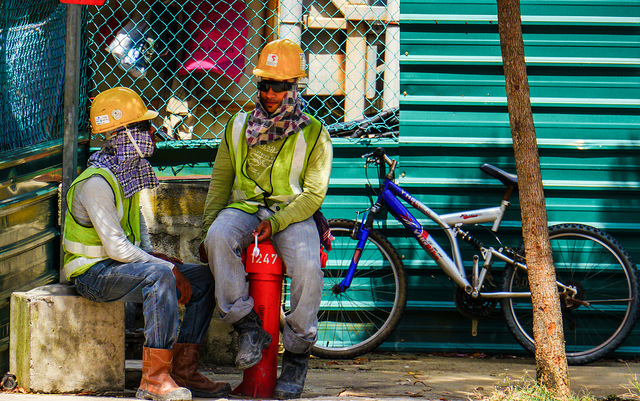
A common sore spot amongst Singaporeans is migrant workers, and we’re sure you have seen or heard unpleasant comments being made about them. Be it about stealing jobs, lowering local worker’s wages, diluting the “Singaporean identity” etc., these arguments are reiterated on a constant basis.
On the other hand, there are social justice advocates who encourage us to have some compassion as migrant workers are just like everyone else – simply trying to survive in a harsh world.
The debate about migrant workers just goes back and forth endlessly, with no end in sight.
But perhaps we’ve been looking through our lenses for too long. This debate has always been centred on what we think about them. But what about the other way around?
This video by a student-run project, Familiar Strangers, offers us a fresh perspective on this contentious issue by focusing on migrant workers themselves, and what they think about Singaporeans’ opinions towards migrant workers.
Migrant Workers Respond To Comments Made By Singaporeans
https://www.facebook.com/sgfamiliarstrangers/videos/vb.1029581337094119/1067490149969904/?type=2&theater
This video, which is quickly gaining traction on social media, drives home a simple yet poorly understood message: migrant workers are people too.
Just like us, they are socially aware (“There are differences between China and Singapore”), have a strong sense of justice (“But if we cause no harm and are just here to work, then this statement is wrong”), and are emotionally affected by what others say about them.
Although this message makes sense, it remains immensely difficult to erase the negative stereotypes about migrant workers that have long solidified in our society.
So the next time you engage in a discussion about migrants workers, be it online or offline, keep in mind that your words have an impact.
They can negatively influence the opinions of a family member or friend. They can contribute to a greater movement of accepting and embracing migrant workers. And they can actually make or break a fellow migrant worker’s day.
By sparing a thought for their feelings and being more careful about what you say, you are slowly chipping away at the harmful prejudices that separate us and them.
And hey, Singapore is small enough – is there really space for such a divide?
Check out Familiar Stranger’s Facebook page and
Here’s some news that you don’t hear everyday – according to a report by It’s also not everyday that you see such old-fashioned websites! Visitors can simply utilise the search bar at the top right hand corner to search if they (or their business) have an outstanding claim. For the freshest and most useful updates on what’s happening in Singapore, do ‘like’ Discover SG on Facebook! Featured Image Credits: The Straits TimesThe Government Is Holding Onto $150M Of Unclaimed Money – Some Of It Might Be Yours!

The Ultimate 2016 Guide to Junior College Open Houses in Singapore
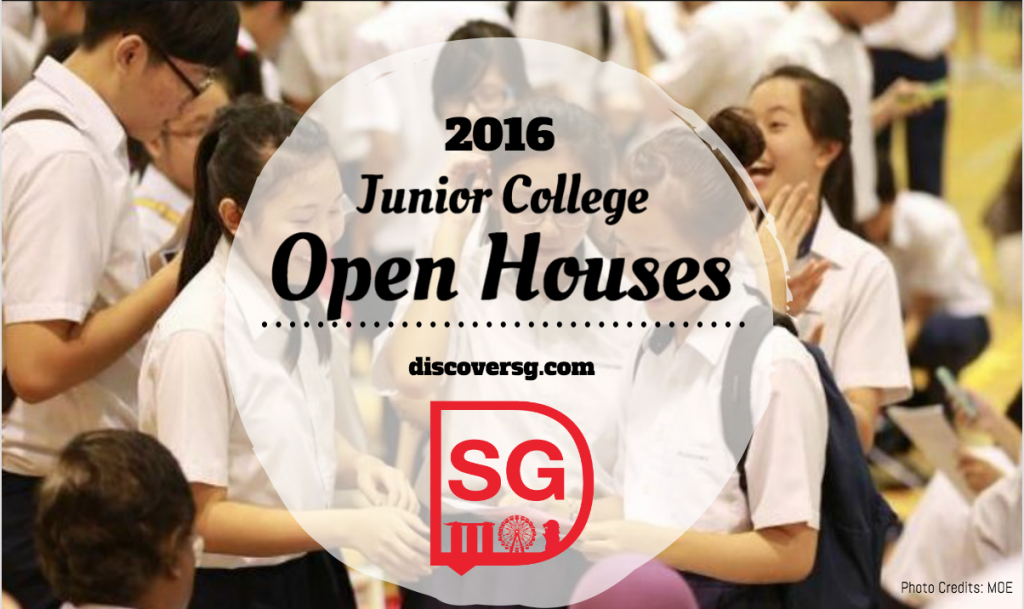
To all our ‘O’ Level students receiving your results next Monday, the team at Discover SG knows that you are a melting pot of emotions right now: excited, anxious, and perhaps still undecided about what school to go to. You’re thinking about all the open houses to visit and you’re feeling overwhelmed.
So, for all the students interested in going to a JC, here’s a helpful compilation of all the JC’s open houses (timings and addresses included) to help you make the most out of the open house period.
Have fun visiting and here’s wishing that you get into the school of your dreams!
Also, check out our The Ultimate 2016 Guide to JC Open Houses in Singapore[/caption]
[caption id="attachment_301" align="alignnone" width="1200"]
The Ultimate 2016 Guide to JC Open Houses in Singapore[/caption]
[caption id="attachment_302" align="alignnone" width="1200"]
The Ultimate 2016 Guide to JC Open Houses in Singapore[/caption]
[caption id="attachment_303" align="alignnone" width="1200"]
The Ultimate 2016 Guide to JC Open Houses in Singapore[/caption]
The Ultimate 2016 Guide To Polytechnic Open Houses in Singapore
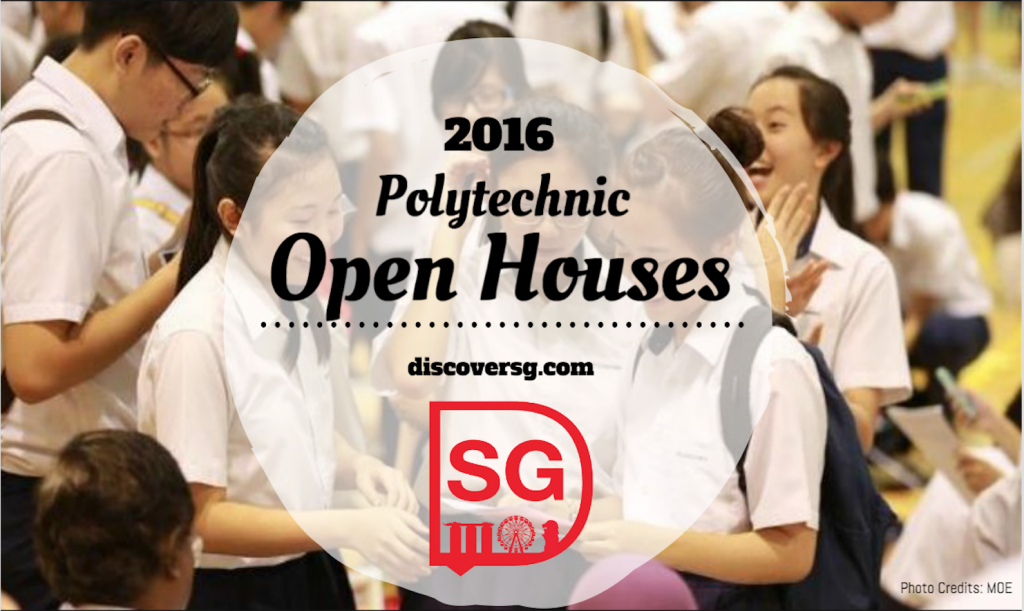
[WOW] 6 Days Of Free Rides Along New Downtown Line (Bukit Panjang) from 27th Dec!

As we move into the festive season, you’d be delighted to know that the new Downtown Line, will be free for 6 days to celebrate its new launch in selected stations!
From 27th December until 1st of January, rides will be free along the 12 stations of the Downtown Line 2 and the 6 stations of the Download Line 1. Only lines along these stations will be free, commuters who are travelling on other rail lines will still need to pay. Commuters must start and end their journeys at any of the 18 Downtown Line stations to enjoy free travel.
Here are the map of the new Downtown Line in case you are unfamiliar with it:
[caption id="attachment_176" align="aligncenter" width="1261"]When the Downtown Line 1 was launched in December 2013, commuters also enjoyed free rides on the line for the first 11 days.
The rest of the Downtown Line is on track for completion in 2017.
Merry Christmas everyone and share this with someone who stays along the new downtown line, especially in Bukit Panjang!





